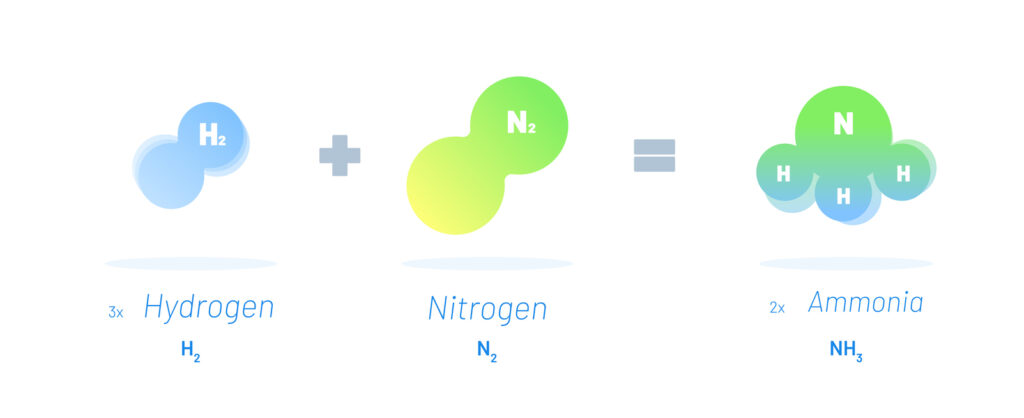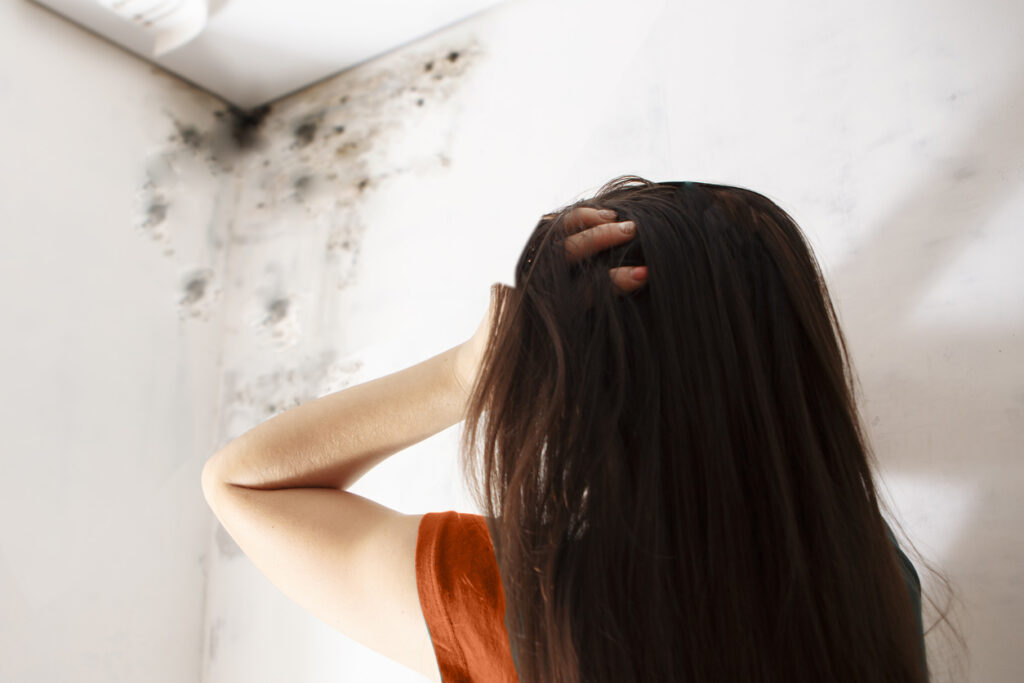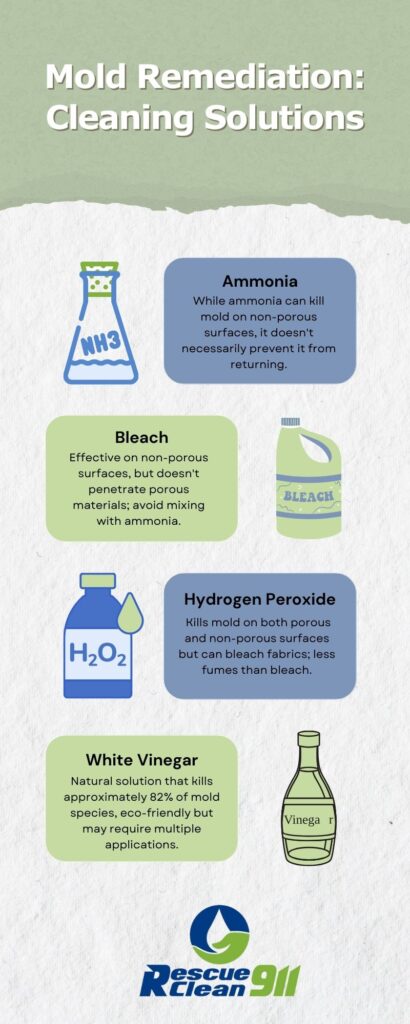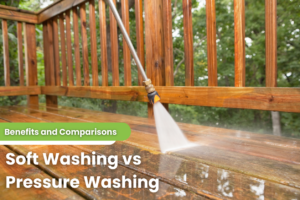Mold is a significant subject of concern in many homes and structures worldwide. Mold, a type of fungus consisting of small organisms found virtually everywhere, indoors and outdoors, reproduces by creating tiny spores that float into the air, invisible to the naked eye. These mold spores become hazardous when they land in damp spaces and start to grow.
There are thousands of mold species. However, black mold, the most infamous member of the mold family, is known to produce toxic byproducts that can be harmful and even deadly. Regardless of the type, molds propagate in places with excess moisture, such as leaks in roofs, windows, or pipes, or areas where there has been flooding or high humidity levels. Mold growth often appears as spots and can come in a variety of colors, including green, black, white, and more.
Mold can have serious health implications, especially for people with underlying health issues. Itchy skin, coughing, sneezing, wheezing, itchy eyes, and a stuffy nose are common reactions to mold. For people with asthma symptoms or lung conditions, exposure to mold spores can cause more severe reactions.
Mold doesn’t just pose a threat to our health. It can also lead to significant structural damage. The tiny mold spores can infiltrate porous materials such as wood, drywall, and ceiling tiles, accumulate over time, and gradually degrade these materials.
This introduction to mold underscores the importance of valid and timely mold remediation methods. One widely debated topic around mold removal is whether ammonia kills mold. The answer requires a detailed understanding of both the nature of mold and the properties of ammonia, which we will delve into shortly.
The Science Behind Ammonia: A Closer Look
One cannot accurately address the question, “Does ammonia kill mold?” without first understanding the nature of ammonia. What is it? How does it function as a cleaning agent? And what are its potential risks and benefits?
What is Ammonia?

To start, household ammonia is a solution of ammonium hydroxide in water — in simpler terms, a combination of ammonia gas and clean water. Known scientifically as NH3, ammonia is a naturally occurring, colorless gas with a characteristic pungent smell, often associated with cleaning products.
Ammonia’s Use in Cleaning Products
Ammonia has proven itself to be a powerful cleaner. The secret lies in its chemical structure — particularly its nitrogen atom, which readily forms bonds with other substances. This is the active ingredient that makes many household cleaners so effective. When combined with water to form ammonium hydroxide, it can break down the structure of grime, grease, mold, and other tough stains, allowing them to be wiped away.
Known as an alkaline cleaner, ammonia works exceptionally well on hard surfaces like glass and stainless steel, counteracting the effects of sticky substances and providing thorough cleanliness. It can also evaporate without leaving behind residues, a property highly valued in window and glass cleaning.
The Downsides of Ammonia
However, this powerful cleaning ability comes with caution. Ammonia can emit a strong and unpleasant odor and can produce harmful or even toxic fumes if improperly mixed with other chemicals like bleach (sodium hypochlorite). When using an ammonia solution, it is important to ensure good ventilation and limit direct contact as it can irritate skin and eyes.
The Role of Ammonia in Mold Removal
After peeling back the layers of what makes ammonia a strong cleaning agent, we reach our cardinal question: Does ammonia truly kill mold? To cut to the chase, the answer is yes, to an extent. However, its success is confined to specific circumstances which involve non-porous surfaces.
Porous vs Non-Porous Surfaces

What does this mean? Well, a surface is termed non-porous if it doesn’t allow air or liquid to pass through it. This includes hard surfaces like glass, metal, countertops, sinks, bathtubs, and even some types of tile. The mold that is growing on these non-porous surfaces can interact directly with the ammonia solution, and through this direct contact, the ammonia can effectively kill the surface mold.
It’s not so effective, though, when it comes to porous surfaces. Items like ceiling tiles, carpets, insulation, and wood are considered porous. These materials can absorb and trap the mold spores deep within, and ammonia may not be capable of penetrating these materials to eliminate the mold.
In terms of application, ammonia can be used to clean mold by adding it to warm water in a spray bottle. However, due to its potent and strong nature, it should be adequately diluted before applying it to the affected area. It’s also recommended to wear gloves and ensure the area is well-ventilated.
Ammonia: A Short-Term Solution
A point to remember is that while ammonia can kill mold on non-porous surfaces, it doesn’t necessarily prevent it from returning. It’s equally vital to control the mold growth’s underlying causes, like excess moisture, to stop it from returning even after a thorough cleaning.
While ammonia can be a potent weapon against mold, it should be used very carefully considering its potential to emit toxic fumes. And while we have seen that it can kill mold on non-porous surfaces, it’s not as effective on porous materials, meaning its usage is somewhat limited. This leads to the next section where we compare ammonia with other cleaning products and evaluate their efficacy in mold removal.
How Does Ammonia Fare Against Other Cleaning Solutions?
You might be asking: if ammonia is limited in its mold-killing capabilities, then what else is there? Let’s dive into a comparison of ammonia with other household products known for their mold-cleaning properties — bleach, hydrogen peroxide, and white vinegar.

Bleach
Beginning with bleach is often the first thing homeowners reach for when faced with mold. Like ammonia, bleach solution (chlorine bleach to be specific) is effective at killing surface mold on non-porous materials like bathroom tiles. Its active ingredient, sodium hypochlorite, can destroy mold spores on contact. However, bleach can’t penetrate below the surface to eliminate mold growth in or on porous materials. Keep in mind, mixing bleach with ammonia creates a dangerous chemical reaction producing a toxic chemical that is poisonous if inhaled.
Hydrogen Peroxide
Hydrogen peroxide, on the other hand, has a leg up on both bleach and ammonia in that it can kill mold on both porous and non-porous surfaces. It’s also less likely to produce harmful fumes. Yet, it can bleach fabrics and other materials, so caution should be exercised.
White Vinegar
White vinegar is another household ingredient noted for its mold-killing capabilities. While not as powerful as bleach or hydrogen peroxide, vinegar does kill about 82% of mold species and is a safe, non-toxic alternative to harsh chemicals. It may require more elbow grease and possibly repeated applications, but vinegar is a safe and eco-friendly option.
Which Cleaning Solution is the Best?
Each of these cleaning solutions has its pros and cons. Ammonia, bleach, and hydrogen peroxide are potent solutions that can kill visible mold effectively, but each carries a risk of toxic fumes and isn’t fully effective on all material types. Vinegar, while milder and safer, may require more work to eradicate mold entirely.
In the world of mold clean-up, it’s not only about what kills the mold. Safety for those doing the cleaning is crucial, as is ensuring you’re not creating a potentially more toxic environment through the cleaning process. Thus, in instances of significant mold infestation, seeking out professional services from trusted mold remediation companies like Rescue Clean 911 may be the wisest, most effective choice. A professional team is trained in identifying and removing molds, including those that lurk beneath the visible surface and holds in-depth knowledge of the safest and most effective cleaning solutions.
Rescue Clean 911: Your Trusted Mold Remediation Expert
When it comes to managing mold infestation and removal, it’s essential to rely on expert assistance. That’s where Rescue Clean 911 comes into the picture. We are a fully licensed, bonded, and insured company specializing in remediation techniques and strategies that effectively combat and eliminate mold growth.
Our technicians are IICRC and NORMI certified in biohazard cleanup, mold remediation, and mold removal. These certifications ensure that our team is equipped with the latest knowledge of safe and efficient mold remediation techniques. The ability to handle biohazards ensures that we can deal with the most dangerous molds, often referred to as toxic molds, with absolute safety.
Emergency response isn’t just about rushing to the scene. It’s about careful planning, strategic execution, and ensuring that all cleanup and restoration processes are thoroughly completed. We quickly and effectively not only address the visible mold but also the sources of mold growth that might be hidden beneath surfaces. This exhaustive approach is vital as it prevents future mold growth.
Our solution isn’t just about removing mold. It’s about restoring your peace of mind. Knowing you live in a mold-free environment is important for your overall well-being, and this is what we aim to offer each of our clients. Trust in our knowledge and capabilities – call Rescue Clean 911 today for our expert mold remediation services.









